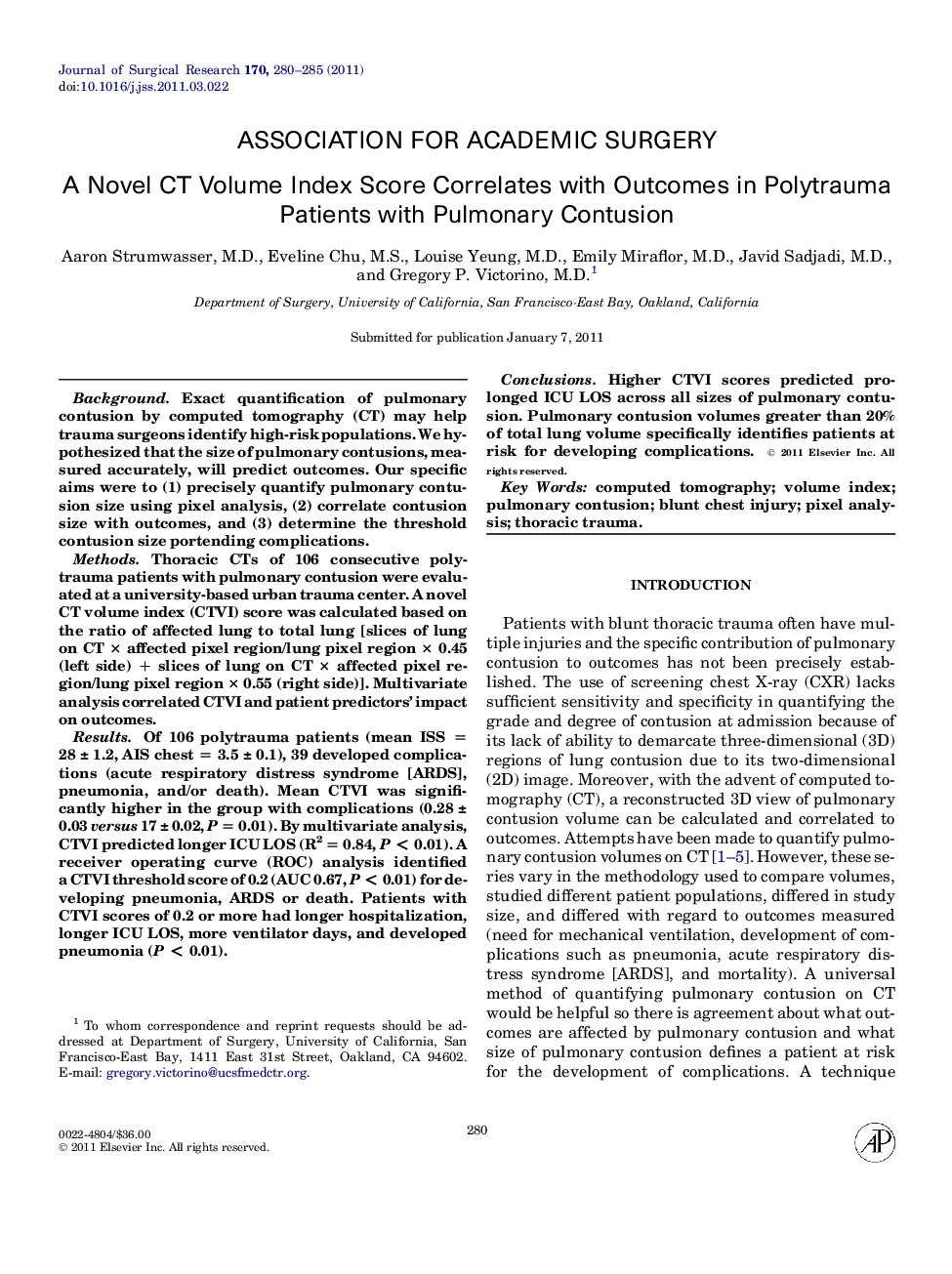| Article ID | Journal | Published Year | Pages | File Type |
|---|---|---|---|---|
| 4302151 | Journal of Surgical Research | 2011 | 6 Pages |
BackgroundExact quantification of pulmonary contusion by computed tomography (CT) may help trauma surgeons identify high-risk populations. We hypothesized that the size of pulmonary contusions, measured accurately, will predict outcomes. Our specific aims were to (1) precisely quantify pulmonary contusion size using pixel analysis, (2) correlate contusion size with outcomes, and (3) determine the threshold contusion size portending complications.MethodsThoracic CTs of 106 consecutive polytrauma patients with pulmonary contusion were evaluated at a university-based urban trauma center. A novel CT volume index (CTVI) score was calculated based on the ratio of affected lung to total lung [slices of lung on CT × affected pixel region/lung pixel region × 0.45 (left side) + slices of lung on CT × affected pixel region/lung pixel region × 0.55 (right side)]. Multivariate analysis correlated CTVI and patient predictors’ impact on outcomes.ResultsOf 106 polytrauma patients (mean ISS = 28 ± 1.2, AIS chest = 3.5 ± 0.1), 39 developed complications (acute respiratory distress syndrome [ARDS], pneumonia, and/or death). Mean CTVI was significantly higher in the group with complications (0.28 ± 0.03 versus 17 ± 0.02, P = 0.01). By multivariate analysis, CTVI predicted longer ICU LOS (R2 = 0.84, P < 0.01). A receiver operating curve (ROC) analysis identified a CTVI threshold score of 0.2 (AUC 0.67, P < 0.01) for developing pneumonia, ARDS or death. Patients with CTVI scores of 0.2 or more had longer hospitalization, longer ICU LOS, more ventilator days, and developed pneumonia (P < 0.01).ConclusionsHigher CTVI scores predicted prolonged ICU LOS across all sizes of pulmonary contusion. Pulmonary contusion volumes greater than 20% of total lung volume specifically identifies patients at risk for developing complications.
